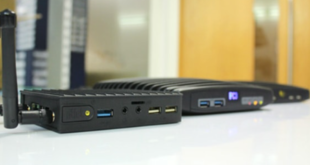Are you looking for reliable, secure internet access on the go? Mobile proxies provide a great solution for businesses and individuals who need to stay connected while traveling or in times of emergency.
In this blog post, we’ll discuss how to set up and configure a 4G or 5G mobile proxy, as well as some best practices when using one. With this information, you’ll be able to ensure a secure connection and get the most out of your mobile proxy setup. Read on for more!
What is a 4G or 5G Mobile Proxy?
A 4G or 5G mobile proxy is a technology that allows you to access the internet from any location using a mobile device as an intermediary. It uses cellular service to transmit data, which makes them reliable and secure connections with low latency and high speed.
Mobile proxies are becoming increasingly popular due to the increased need for remote working and other activities that require reliable connections while on the go. In addition, since cellular networks offer more versatility than conventional broadband connections, they can be used in areas where there is no access to traditional fiber-optic internet.
4G/5G mobile proxies are convenient and cost-effective for businesses and individuals alike who want to stay connected when traveling or in times of emergency.
Setting up a 4G or 5G Mobile Proxy
Purchase a SIM card with a data plan
Purchasing a 4G or 5G SIM card with a data plan is an ideal way to ensure a reliable mobile proxy setup. It’s never been easier to get your connection up and running quickly, as there are many different plans available to suit all needs.
Whether you’re looking for a low-cost option or prefer unlimited data plans, the right provider can help you get connected quickly and seamlessly. Explore the available options today, and begin using your new mobile proxy in no time.
Choose a mobile proxy provider
Setting up a 4G or 5G mobile proxy is an efficient way to anonymize your IP address and stay secure online. When choosing a mobile proxy provider, consider factors such as the availability of multiple locations, speed, cost, customer service, and coverage.
Many providers have understanding plans that can help you decide based on your specific needs. Choosing the right provider can help ensure a positive experience and get the most value out of your mobile proxy setup.
Download and install the proxy software
Installing a 4G or 5G mobile proxy requires downloading the corresponding software. It provides the necessary security and privacy to ensure that all communications in your network are kept confidential and secure from malicious attacks and espionage.
To install such a proxy, first, download the necessary proxy software from a legitimate source, then install it by applying strict protocols for maximum security. Once everything is configured correctly you are ready to enjoy a secure and safe online experience.
Configure the proxy settings
If you are setting up a 4G or 5G mobile proxy, configuring the proxy mobile settings is an essential step. It involves manually assigning a server and/or port number to your device, as well as entering an optional username and password if required.
Ensure to save the settings after completion, to avoid needing to re-enter them next time. Additionally, consult your device’s manual for any additional setup instructions and technical support offered.
Taking care when carrying out this process will ensure that your proxy functions properly and offers maximum performance.
Testing the Mobile Proxy
Check the IP address
Testing your mobile proxy’s IP address is essential for ensuring that your connection is secure. To do so, you’ll need to understand the network structure of your device. This process requires a thorough evaluation of the available IPs to guarantee optimal performance.
Once you’ve established a valid IP address, further testing is needed to ensure no malicious activity exists on the server. By verifying this data, you can guarantee safe internet access when using a proxy.
Verify the speed and stability of the connection
When testing the mobile proxy, it is important to verify the network speed and stability of the connection. Utilize tools such as ping utilities and internet speed testers to assess your connection health.
This will enable you to troubleshoot and identify possible issues. Additionally, consider running several tests in different environments in order to account for variations in connectivity that could impact performance.
Run tests to ensure the proxy is working as expected
It’s important to run tests to check the proxy is functioning correctly for Testing the Mobile Proxy. Simple functional testing can easily and quickly verify expected results. Performance tests help identify bottlenecks and any possible issues that may affect the user experience.
Stress and load testing should be conducted periodically to ensure the system continues to meet the necessary requirements. Before and after each change, regression testing needs to be done to avoid introducing unexpected problems or bugs into the proxy system.
Overall, regular testing is essential for ensuring that the Mobile Proxy meets its performance goals and works reliably for users.
Configuring the Mobile Proxy for Different Use Cases
Setting up the mobile proxy for web scraping
Configuring the Mobile Proxy for web scraping involves setting up a proxy server to access and gather information from an application or website. With a mobile proxy setup, users can bypass location restrictions, perform load-testing and also block unwanted bots.
It is important to note that for a comprehensive mobile proxy solution, browser-specific headers need to be set up as well. By utilizing different use cases such as IP rotation and whitelisting, the mobile proxy setup can give the user access to all desired resources conveniently with minimal effort.
Configuring the mobile proxy for social media management
Configuring a mobile proxy for social media management requires careful evaluation of different use cases. Each use case needs to be tailored to specific security, compliance, and data privacy needs.
A mobile proxy can improve user experience, reduce network latency and provide critical protections when accessing resources remotely or via untrusted networks. By configuring specific rulesets for each use case, organizations can create a secure and efficient workflow.
Configuring the mobile proxy for ad verification
Configuring a mobile proxy for ad verification is a great way to ensure accurate results and improved customer experience. It is especially beneficial for mobile users where the process of setting up a web proxy server can be difficult due to limited access.
Ad verification can be done in many ways, such as setting up network protocols, adjusting country settings, or establishing proxies through a designated IP address. With the help of mobile proxies, these processes become much simpler, enabling swift customer service and an overall improved user experience.
Best Practices for Using a Mobile Proxy
Mobile proxies are an effective way to remain anonymous online and bypass geo-restrictions when using any device, and using them correctly can further enhance your security and privacy. To reap the full potential of mobile proxies, here are some best practices you should consider.
These will help in providing a more secure and reliable connection while avoiding common pitfalls associated with their usage. So make sure you have informed yourself thoroughly on how to use your mobile proxy effectively for maximum benefits!
- Monitor the Speed and Stability of Your Connection: It is essential to monitor the speed and stability of your connection regularly to ensure maximum performance.
- Use Secure Encryption Protocols: Utilizing secure encryption protocols such as SSL/TLS can help protect your data by encrypting it before transmission over the network. This will also help prevent hackers from accessing your information.
- Set Up Access Rules: When setting up a mobile proxy, it is important to establish access rules to define who and what can connect to the network. This helps ensure that only authorized users have access to the server and its resources.
- Use Multiple IP Addresses: Utilizing multiple IP addresses for different tasks can help enhance security and privacy, as it makes it difficult for malicious actors to track your activity.
- Perform Regular Testing: It is important to perform regular testing on your mobile proxy setup to identify potential issues or problems with the network. This will ensure that it continues functioning properly and efficiently in the future.
In conclusion
Mobile proxies are a great way to stay connected while on the go and ensure secure internet access. By following these steps and best practices, you can configure your 4G or 5G mobile proxy and get the most out of it. With this information, you’ll be able to enjoy an efficient and reliable connection wherever you are!
 Time News Global Business, Technology, Entrepreneurship News
Time News Global Business, Technology, Entrepreneurship News




